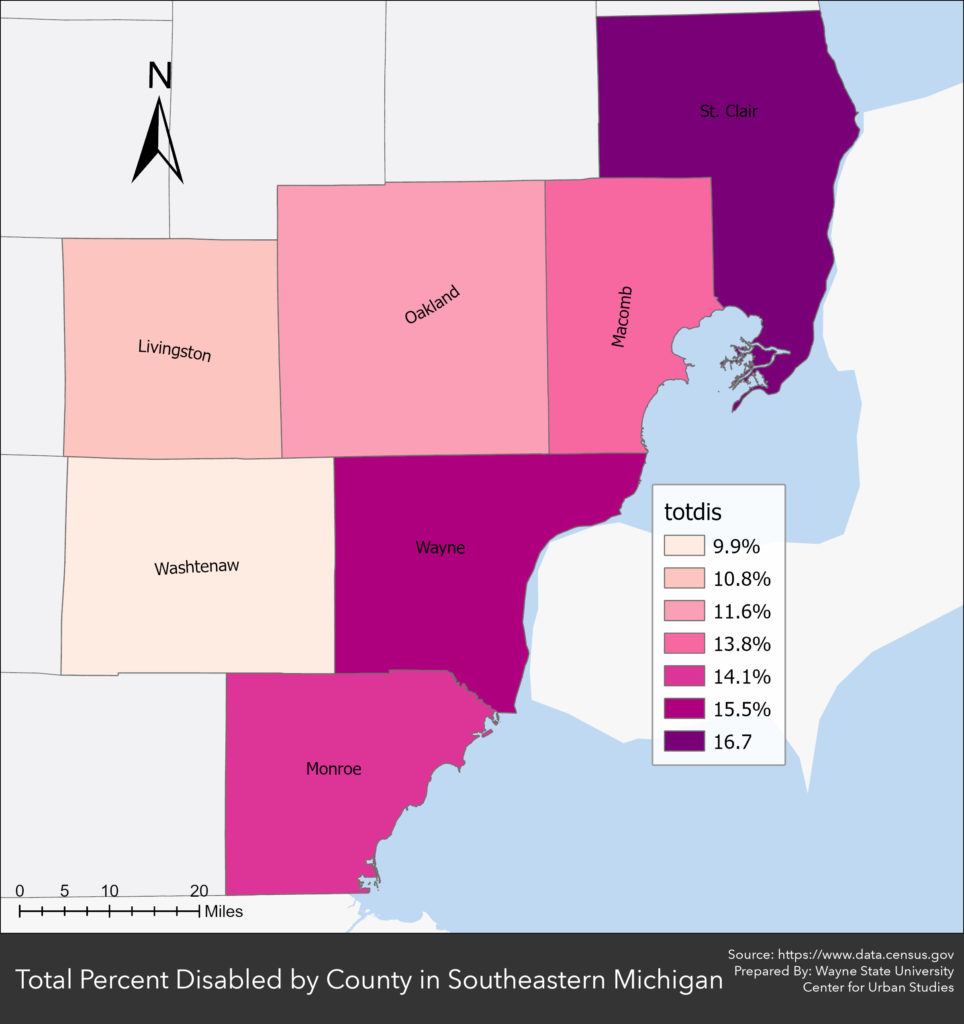Prior to the COVID vaccine distribution efforts opening to all Michigan residents 16 years of age and older, there was a strong push to move up the distribution date of the community of people with disabilities and its caretakers. According to advocates, the need for access to COVID vaccines for the community of people with disabilities was imperative because of the close physical contact this community has with their caretakers and often the barriers these individuals have with strictly adhering to COVID guidelines.
According to the 2019 American Community Survey about 13 percent of the US population lives with a disability. In Michigan, that percentage is 14 percent. The Census categorizes disabilities by vision, hearing, cognitive, ambulatory and/or self-care. In Southeastern Michigan there are two counties with a higher percentage of residents with disabilities than the state average. In Wayne County, 15.5 percent of the population is considered disabled; in St. Clair County 16.7 percent of the population is considered disabled.

Of the community of people with disabilities in Southeastern Michigan, the 75 years of age and older community has the highest percentage of individuals considered disabled. Furthermore, of the community in the region, those with ambulatory disabilities have the highest percentage. St. Clair County not only has the highest percentage of those with disabilities but also the highest percentage of those with ambulatory disabilities at 25 percent.
While several counties and communities opened their COVID distribution efforts early to people with disabilities–such as Detroit and Macomb County–this may not have happened without the advocacy that occurred. Raising awareness of disabilities and the barriers that may be incurred because of them is vital in ensuring equality and equity.